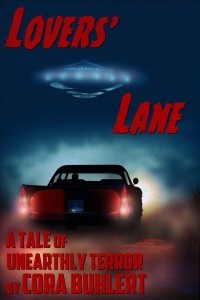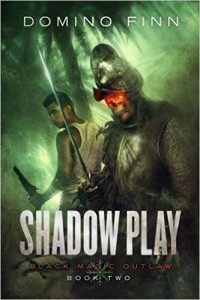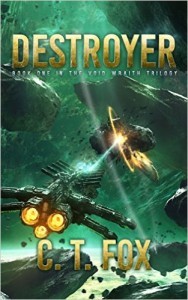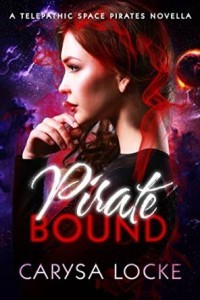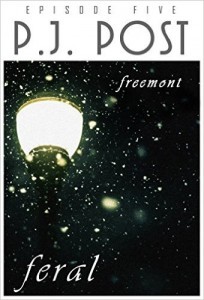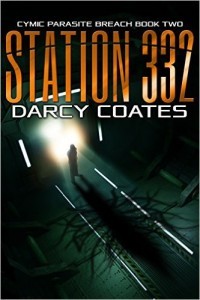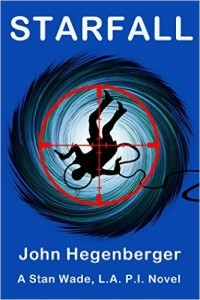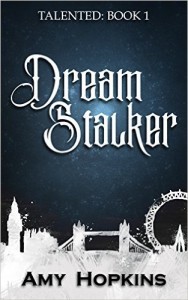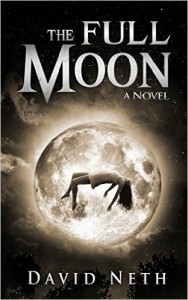Cora Buhlert's Blog, page 99
April 15, 2016
The Böhmermann Case
I’m one of them. One of the approximately 300000 to 500000 German TV viewers who knew who Jan Böhmermann was before last week and who regularly watched his comedy program Neo Magazin Royale in its Thursday/Friday night post-midnight graveyard slot.
Now everybody knows who Jan Böhmermann is. His case is the top news headline in Germany and his smiling face looks at you from international news sites like The Atlantic (good summary, just don’t read the comments) or The Guardian that normally would never have paid any attention to an obscure German comedian.
More neepery about German politics, German TV and freedom of speech, press and art behind the cut:
So what happened? In the March 31 edition of his show Neo Magazin Royale, Jan Böhmermann read a very rude poem about the Turkish president Recep Tayyip Erdo?an precisely to point out the limits of freedom of speech and freedom of the press. The background is that Erdo?an had just thrown a fit about a song that had aired in another German comedy program, extra3, a song that criticized Erdo?an’s tendency to have critical journalists arrested to the tune of the Nena song “Irgendwie, Irgendwo, Irgendwann”. As satire goes, it was fairly harmless and to the point, yet Erdo?an called in the German ambassador to Turkey (who politely informed him that Germany has a little thing called freedom of press) and demanded that the song be deleted from the web. This in turn prompted Böhmermann to perform his deliberately insulting poem in order to point out the limits of satire.
A video of the extra3 song may be found here. Videos of the Böhmermann poem keep getting deleted and the one clip I found was posted on the website of a rightwing extremist magazine I refuse to link to, but a full transcript may be found here.
As might have been expected, Erdo?an (who must be an avid watcher of obscure German comedy programs) threw an even bigger fit and demanded criminal persecution of Jan Böhmermann. And unfortunately, the German criminal code contains an obscure paragraph that grew out of the lèse-majesté laws of the Imperial era and that makes it illegal to insult foreign heads of state, subject to persecution, if said head of state lodges an official complaint with the German government who will then decide whether the offender will be prosecuted. Paragraph 103 of the German criminal code is rarely invoked, though it has been in the past regarding alleged insults against the Shah of Persia (who also had his secret police beat up German student protesters in 1967 with not a peep from the German government – one protester died, shot dead by a German police officer), Ayatollah Khomeini (who objected to a doctored clip in a comedy program which showed enraptured women showing him with lingerie), Augusto Pinochet, the Kaczynski brothers (who objected to being called potatoes – coincidentally, Poland’s current prime minister also feels insulted by the same Jan Böhmermann skit due to being mentioned in a list of European politicians who would like to limit the freedom of the press) and several Popes (the latest example was a cartoon depicting Pope Benedict with condoms on his fingers). In short, it is a law that protects a bunch of very humorless people with rather tenuous ideas of democracy. And it’s a law that has no place in a modern democratic country and in fact should have been deleted long ago, as soon as the Kaiser was sent packing in 1918. Should foreign heads of state feel insulted by German journalists and comedians, they are free to sue for defamation and libel like any other person.
Now the German government had to decide to give the go-ahead to prosecute Jan Böhmermann. And today, Angela Merkel announced that she would give the go-ahead, because this was an issue not for the government but for the independent German courts to decide. Merkel has been widely criticised for this move and I have to admit that I am disappointed in her – after being extremely impressed with her conduct during the so-called refugee crisis. Though the wording of Merkel’s statement suggests that she is dumping the responsibility on the respective court (which may well decide in favour of Jan Böhmermann) to maintain good relations with Erdo?an especially in the light of the recent refugee agreement with Turkey. Coincidentally, Merkel also announced that paragraph 103 of the German criminal code would be altered or deleted.
All those (both in Germany and abroad) who complain that Angela Merkel is forced to back down in front of Erdo?an in order to safeguard the refugee agreement would do well to remember that Merkel is only in this situation because many other countries, mostly in Eastern Europe, but also the UK, France and the US, refused to take their fair share of Syrian and other refugees, leaving the lion’s share of them for Germany to deal with (which – speaking as someone who teaches German to refugees – works a lot better than many assume). As for those in Germany criticising Merkel’s decision from the right, Angela Merkel only had to push for the agreement with Turkey because of constant attacks from the right regarding her refugee policies. Never mind that the same people who now suddenly to defend Jan Böhmermann had no problem with prosecuting comedians when the offended party was the Catholic church. As for the rightwing nationalist AfD defending Böhmermann, don’t make me laugh. It wasn’t all that long ago that several AfD politicians were calling for Böhmermann’s head, since the AfD is one of his favoured targets. But I guess they hate Angela Merkel even more than they hate Jan Böhmermann.
Never mind that all the people, including politicians, including Angela Merkel, who were Charlie last year and spoke out in support of Charlie Hebdo (which IMO really does cross the line into racism and xenophobia at times and wholesale insults entire religions – whereas Böhmermann insulted a single person and not the Turkish people nor all Muslims – which is still no excuse to gun down cartoonists), are hypocrites, when they defend Charlie Hebdo and Salman Rushdie before, but suddenly turn on Jan Böhmermann. And let’s not forget those German politicians – usually on the right – who still want a certain quote by Kurt Tucholsky banned, the same Kurt Tucholsky who answered the question, “Was darf die Satire?” (What is satire allowed to do?) with “Alles” (Everything). So a lot of the time, people are only willing to defend freedom of speech and freedom of art when they approve of the message.
The bigger issue here is that – regardless of what is written in the Grundgesetz, the German constitution – art, speech and the press are not entirely free in Germany*. Now I agree with some limits on free speech, e.g. regarding hate speech, holocaust denial, etc… I disagree with others, e.g. the way that movies, TV shows and videogames are sometimes edited beyond recognition or made nigh unavailable (good luck trying to find the first two Evil Dead movies in Germany), in order to protect “the youth” from violent content. I don’t have a problem with protecting children and teens from problematic content, but adults should be free to watch or play what they want.
However as a writer, I have issues with the fact that in post-1945 Germany, the so-called personality rights of an offended person regularly trump the freedom of art. We’ve had two major court cases were novels were banned (as well as several involving works of non-fiction) because someone felt that their personality rights were violated by a work of fiction. Klaus (son of Thomas) Mann’s 1936 novel Mephisto, a roman a clef about the German actor and director Gustaf Gründgens and his collaboration with the Nazis, was banned in 1968 following a lawsuit by Gründgens’ adoptive son. So the personality rights of an (admittedly brilliant) actor and director with Nazi connections trump the freedom of art of a gay victim of Nazi persecution. Not really a great moment for German justice.
The second case is that of Maxim Biller’s 2003 novel Esra, an autobiographic novel about the troubled relationship between a Jewish-German man and a Turkish-German woman. Biller’s former girlfriend and her mother sued Biller and his publisher, because they felt the novel was a bit too autobiographic. Biller and the publisher offered to make changes, but the girlfriend and mother were not placated and demanded a ban. The case eventually went before the Supreme Court, which decided in favour of the girlfriend and mother.
Did Biller go a bit too far in his novel? Probably. As his regular appearance in the new Literarisches Quartett prove, he is something of a jerk. Nonetheless, the ban was wrong, especially since Biller and the publisher offered to make changes. Because court decisions like these put every writer in danger of getting sued by everybody who ever felt they recognised themselves in a novel. And people tend to mistake fiction for reality all the time.
Nevermind that except for people who know both Biller and the lady in question personally, no one would have connected the novel to any real person. The novel probably wouldn’t have made big waves either – Biller wasn’t exactly famous at the time. Now, however, it’s an infamous court case. And the ban wasn’t effective either, Esra is easy enough to find on the internet.
Ditto for the extra3 and Jan Böhmermann cases. extra3 airs on a regional channel with a late night repeat on a public TV channel. Every episode is watched maybe by half a million people. Neo Magazine Royale airs on a digital niche channel with a post-midnight repeat on a public TV channel. Every episode is watched maybe by 300000 to half a million people. These are not mainstream programs, they are late night niche programs watched by no more than maybe a million people altogether, probably less because there is likely some overlap among viewers. The Neo Magazine Royale episode in question probably had even fewer viewers than usual, because it was delayed till long past 1 AM because of the death of former German foreign secretary Hans Dietrich Genscher that day. I’m a regular viewer (of the ZDF repeat) and didn’t watch that day, because the show was too late for me.
The Erdo?an song would probably never have made any waves and never reached any Turkish people except for those Turkish-Germans who happen to be regular viewers of extra3. And Jan Böhmermann would never have written and performed his poem, if not for Erdo?an throwing a fit about extra3. And hardly anybody in Germany would have noticed the poem, let alone anybody outside Germany if not for Erdo?an throwing an even bigger hissy-fit. So in short, Erdo?an’s overreaction served to publicise the very pieces of satire he wanted to suppress in an excellent illustration of the Streisand effect in action.
I predict that the courts will likely dismiss the case against Jan Böhmermann as they did with the Pope case six years ago. And even if they don’t (because courts occasionally come to ridiculous decisions – see the Esra case), it’s highly unlikely that Böhmermann will actually go to prison over this. However, that poem and the extra3 song will be in the public consciousness for a long time and Erdo?an has only himself to blame for that.
*And before Americans yell about how speech is so much freer in the US – forget it. The US does not have entirely free speech either, as e.g. obscenity prosecutions regarding fringe pornography show. Their sore spots just lie elsewhere than ours.
Comments closed, because this is the sort of subject that brings out the jerks.
 Send to Kindle
Send to Kindle
April 10, 2016
Of Star Wars and Mary Sues
Last Thursday, the first teaser trailer dropped for Rogue One, this year’s Star Wars movie (apparently we’re getting one every year for Christmas now) and it looks pretty damn good, particularly considering very few people cared a whole lot about a prequel/sidequel story like Rogue One.
Though I’ve been a Star Wars fan since the age of five, I was one of those people who weren’t particularly excited about Rogue One. I wasn’t all that keen on going back in time once again (and I actually like the prequels for what they are). Never mind that what little we knew about Rogue One made it sound like “Star Wars does Grimdark” and we all know how I feel about Grimdark. To be fair, I wasn’t all that excited about The Force Awakens either (and still have some ambivalent feelings about the film), but of course I went to see it anyway and promptly fell in love with Rey, Finn, Poe and BB-8 like the rest of the geek world.
As for Rogue One, that teaser trailer looks pretty damn good and has made me a lot more likely to go and see the movie come December. Besides, I’ll be happy to watch something labeled Star Wars that for once is not about Jedi (I’ve never been a huge fan of the Jedi anyway – ninety percent of the bad things that happen in all Star Wars movies are the direct or indirect fault of the Jedi) and people named Skywalker. It seems that the folks of Lucasfilm have finally noticed what the various tie-in novels, comics, videogames, etc… knew all along, namely that they have got a huge universe in which you can tell lots of different stories. And not all of these stories have to be about Jedi and people named Skywalker.
Apparently, I’m not the only person who thinks that the Rogue One teaser trailer looks pretty good. Within a few hours, Twitter was all ablaze with people excited about the trailer. And within 24 hours, the Internet was full of speculation, analysis and frame by frame breakdowns.
But with the excitement also came the ugly. Because you see, the protagonist of Rogue One is a woman, Jyn Erso played by Felicity Jones. Now this isn’t exactly new – it’s been known for a while now that Felicity Jones would be playing the lead in Rogue One. Nonetheless, certain dudebros on the Internet were shocked – shocked, I’m telling you – that two Star Wars movies in a row would have a female protagonist. Never mind that we’ve had six Star Wars movies in a row with male protagonists – two Star Wars movies in a row with female protagonists and actors of colour in more than bit parts (Rogue One also promises Diego Luna, Donnie Yen and Forest Whitaker among others), now that’s political correctness gone mad and proof that the Social Justice Warriors have taken over Hollywood and that a ban of movies with straight white male protagonists is imminent (well, maybe that would solve the “Oscars so white” problem).
It’s all quite silly and part of the futile attempts of certain very insecure white men to turn back the clock to a time when every single piece of media catered to them and them alone. The same sort of people also proclaimed a “boycott” of The Force Awakens due to its stars being a white woman, a black man and a Hispanic man and we all know how much impact that “boycott” had.
The most common complaint about Jyn Erso, the protagonist of Rogue One, was that she is a Mary Sue. Now this is quite a remarkably conclusion, considering that we know next to nothing about Jyn apart from what we have seen in a ninety second trailer. Which basically comes down to: Jyn is an angry young woman with a shady past who winds up working for the rebellion not quite voluntarily. In short, she’s basically a female version of Han Solo. Oh yes, and she is a fairly slight young woman who is seen running around the Death Star (okay, really just Canary Wharf tube station) and beating up and shooting Stormtroopers (who are not exactly known for being formidable opponents, though what they lack in skills, they usually make up in numbers). Of course, the trailer also gives us a blind man with a staff (played by Donnie Yen) beating the crap out of some Stormtroopers, but seeing a able-bodied woman doing the same means that she must be a Mary Sue. Because you see, Jyn Erso is a woman, a competent and attractive young woman who is good at something. So of course she must be a Mary Sue.
I’ve blogged about the problems with the term “Mary Sue” and its current application to pretty much any competent female character before. And the dudebros complaining about Jyn Erso on the basis of a ninety second trailer, wherein most of the spoken dialogue is actually provided by characters other than Jyn, is a perfect illustration of the phenomenon. And indeed, Jessica Lachenal has posted an open letter to all the angry fanboys calling Jyn Erso and Rey Mary Sues at The Mary Sue, while at Film School Rejects, Alisha Grauso asks what’s so bad about being a Mary Sue anyway.
Now the Star Wars movies, particularly the original trilogy, are set in a universe with a seriously skewed gender balance, a universe that seems to be approximately eighty to ninety percent white and male. The prequels are a little bit better about that – indeed I still remember how stunned I was to see female Jedi – all non-human supporting characters who had barely any lines – in the prequels, because up to then I had assumed that women couldn’t be Jedi, since Obi Wan and Yoda only showed any interest in one of the two potential Jedi available, namely Luke. Even though Leia was shown to be a lot more competent at pretty much everything than either Luke or Han from the moment she was introduced. Just as Padme was a lot more competent than Anakin. But now that competent women actually get to be the heroines of their own Star Wars movies rather than supporting characters to a male chosen one, we have the usual suspects crying Mary Sue.
Never mind that everybody ignores the clearest and most obvious Mary Sue in the entire Star Wars universe (and indeed one of the clearest example of a Mary Sue in pop culture). And this Mary Sue is neither Leia nor Padme nor Rey nor Jyn, it’s Luke Skywalker.
Let’s look at the evidence: Luke is an orphan with a mysterious background who grows up in obscurity, is nigh effortlessly good at some extremely arcane skills and goes on to rescue the princess and save the day. He is severely tested, finds out something horrible about his birth family, has a limb chopped off, resists the dark side and saves the day again and topples a whole evil Empire in the process, an evil Empire that people a lot better trained and more skilled than Luke could not topple. Oh yes, and he shares a name (sort of) as well as a passion for racing with his creator. And like his creator, Luke grew up in a sleepy desert town where nothing ever happened, in a country that was billed as the best and most perfect place to live in, even though the cracks were only visible to anybody who made the effort to look. The parallels become even clearer, if you’ve seen George Lucas’ previous film American Graffiti, which is not just partly autobiographical, but also an indispensable companion piece to Star Wars. In short, Luke Skywalker is a Mary Sue, one of the most obvious male Mary Sues in popular culture along with James Bond and Conan. But for some reason, no one ever complains that Luke is a Mary Sue.
In fact, the very Mary Sueness of Luke was part of what drew me to Star Wars in the first place. Because the story of the adventurous young man from a sleepy desert town where nothing ever happens, who can see all the problems in the supposedly perfect system he lives in and wants nothing more than to get out of his sleepy little town and put everything right, written by another young man from a sleepy desert town disillusioned with his supposedly perfect country, its corrupt leaders and senseless wars, resonated across time and space with a young girl living in a sleepy small village where nothing ever happens, a girl who was told all the time by parents, teachers and the media that she should count herself lucky to be living in such a wonderful free and democratic country, even though she, too, could see all too clearly that the system and the country were far from perfect and how could anybody not see that?
I’m always amazed how many critics fail to see how political the Star Wars movies really are. After all, the original trilogy is a not all that subtle allegory for the America of the Vietnam and Watergate era and the disillusionment of the postwar generation who grew up in what was supposed to be the best country in the world, only to find that their leaders were corrupt and their friends were dying in senseless wars no one wanted. The original trilogy radiates George Lucas’ anger and disillusionment at the US of the Vietnam and Watergate era and Star Wars was Lucas creating a universe where he or rather his fictional counterpart gets to take down the system and fix everything. And though I didn’t know a whole lot about either the Vietnam war or Watergate, when I first watched the Star Wars movies, I could still sympathise with Lucas’ anger and his desire to make things right.
Leia was who I wanted to be – beautiful and good at everything with adoring men and Wookies fighting for my attention – and Han was who I wanted to have. But though Leia is a great and inspiring character, few of us are princesses, senators, spies and rebel leaders at twenty (ditto for Padme, who is a queen at twelve and a senator at twenty*). What we are instead is Luke, the kid from the nowhere town who looks up at the stars. Luke is the most obvious audience identification character, because few of us are as accomplished as Leia or as cool as Han. No, we’re Luke, the dorky small town kid with the big dreams.
Now the new Star Wars films have given us new characters to identify with and aspire to: Rey, Finn, Poe and soon Jyn and whoever else Rogue One will give us. These new heroes are a lot more diverse than the old ones and that’s a good thing, because it’s no longer 1977 and white men are no longer the only group deemed worthy of having a hero to identify with. And if certain dudebros have problems with that – well, tough luck.
*I’d argue that one of the main problems with the prequels is the lack of characters the audience can identify with. Both Padme and Obi Wan are rather inaccessible, since few of us are Jedi masters or accomplished teenaged diplomats and rulers. And as for Anakin, who the hell wants to be Anakin Skywalker?
 Send to Kindle
Send to Kindle
March 30, 2016
Indie Speculative Fiction of the Month for March 2016
 It’s that time of the month again, time for “Indie Speculative Fiction of the Month”.
It’s that time of the month again, time for “Indie Speculative Fiction of the Month”.
So what is “Indie Speculative Fiction of the Month”? It’s a round-up of speculative fiction by indie authors newly published this month, though some February books I missed the last time around snuck in as well. The books are arranged in alphabetical order by author. So far, most links only go to Amazon.com, though I may add other retailers for future editions.
Once again, we have new releases covering the whole broad spectrum of speculative fiction. We have space opera, military science fiction, science fiction romance, paranormal romance, fantasy romance, epic fantasy, urban fantasy, horror, post-apocalyptic fiction, vampires, wizards, demons, alien invasions, flying saucers, telepathic space pirates, monstruous conspiracies, dead druids, magical wars, royal bodyguards, gods in the modern world and much more.
Don’t forget that Indie Speculative Fiction of the Month is also crossposted to the Speculative Fiction Showcase, a group blog run by Jessica Rydill and myself, which features new release spotlights, guest posts, interviews and link round-ups regarding all things speculative fiction several times per week.
As always, I know the authors at least vaguely, but I haven’t read all of the books, so Caveat emptor.
And now on to the books without further ado:
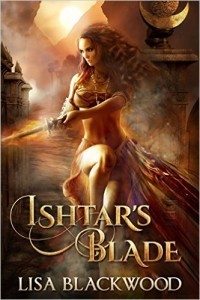 Ishtar’s Blade by Lisa Blackwood:
Ishtar’s Blade by Lisa Blackwood:
Warrior.
King’s confidant.
Avenging blade of the Goddess Ishtar.
Iltani asked to be none of these things. Yet fate does not ask permission when she weaves souls upon destiny’s loom.
On the day of Iltani’s birth, an assassin tried and nearly succeeded in ending the line of the gryphon kings. Out of that bloodshed, an unbreakable bond was forged between child-king and goddess-chosen infant, and from that pivotal moment forward, Iltani was never farther from King Ditanu than his shadow. Not until her training to become Ishtar’s Blade required her to leave.
After four brutal years of training, Iltani now returns to court as Ishtar’s Blade and takes up her role of king’s shadow—a dangerous position in a court where the threat of another assassination is but a blade’s width away. But for the chance to stand at the side of her beloved king, she will endure the dangers of court intrigues, assassins, and political maneuverings.
1956. After a sock hop at the local high school gym, teenagers Betty and Cody drive out to Lovers’ Lane together. Betty knows only too well that good girls don’t go to Lovers’ Lane with boys. But Cody is her one true love and besides, he swore that he’d love her forever or may he be struck down where he stands. But then, an alien invasion shows Betty just what Cody’s word is truly worth…
This is a story of “The Day the Saucers Came…”, a loosely connected series of eyewitness accounts of a B-movie type alien invasion in 1956.
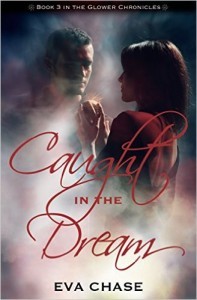 Caught in the Dream by Eva Chase:
Caught in the Dream by Eva Chase:
Mateo Jimenez is haunted by the death of his first girlfriend, and his fear of repeating past mistakes has cost him personal relationships and now his job. While his colleagues protect L.A. from the demonic Glowers, he’s been demoted to office work.
So when a Glower approaches him to negotiate a ceasefire, Mateo agrees to listen, planning to gather information on the demons that will prove his worth. He isn’t prepared to be so tempted by Kess, who uses her supernatural talents to bring his most buried desires to life. As he struggles to keep the upper hand, he discovers he can provoke human emotions in the demon, but the more warmth and kindness Kess offers, the more confused his own feelings become. No longer sure what’s an act and what’s real, Mateo sees a chance to stop the Glowers for good. But first he must decide whether trusting Kess is the key to succeeding or the greatest betrayal he could ever commit.
The third book in The Glower Chronicles, a steamy New Adult paranormal series.
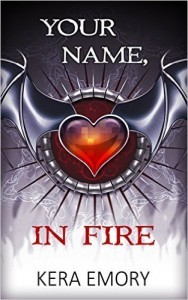 Your Name, In Fire by Kera Emory:
Your Name, In Fire by Kera Emory:
Connor Black doesn’t believe in the supernatural, and that’s about to bite him in the ass.
Connor’s life gets interesting when a new writer joins his video game studio. Sparks fly; Wendy is pretty, intelligent, and definitely into Connor—but careful never to reveal much about herself.
And before long, Connor has his own secrets to worry about: a tattooed stranger attacks and nearly kills him, giving no explanation. Angry but mystified, Connor doesn’t tell anyone what happened, and tries to put the attack behind him—and he tries to convince himself that the weird little things he’s starting to notice about Wendy aren’t really that weird. Stressed and sleep-deprived, with the looming deadline of a multi-million-dollar video game launch weeks away, Connor just doesn’t have time to deal with ‘weird’.
But when the evidence trail of an horrific crime begins to lead back to Connor himself, Connor must seek out answers to the questions he’s been avoiding, even if it means risking his own life and sanity—and the lives of those around him.
I’m Cisco Suarez, and a week ago I was dead.
Cursed into serving a clandestine shadow group, I have a lot of blood on my hands. Good thing I also have a juvenile problem with authority. I’m not taking orders anymore, and the first thing on my bucket list is bringing them down.
If I’m good at anything, it’s looking in dark places. But I’ve got shadows of my own. Horrific deeds coming back to haunt me, and not the metaphorical kind of haunting, either. I’m talking ghosts, mages, and that thing with the glowing red eyes.
Just goes to show you, it really is true what they say. What goes around comes around. I only hope to give more than I get.
Is resurrection overrated or what?
Mankind’s outer colonies are disappearing. Without warning. Without a trace. Fleet command chalks the attacks up to pirates, but Captain Dryker of the UFC Johnston isn’t buying it.
Defying command, he leads his misfit crew into hostile territory in search of answers. They encounter the mythical Void Wraith, an unstoppable legend whispered by the first race. After 26,000 years the Void Wraith have returned to begin the next Eradication. Their technology is superior, their motives unclear.
Humanity cannot stop them. Not without help. Captain Dryker’s only hope is to forge an alliance with mankind’s greatest enemy, the savage Tigris.
One maverick captain, an unlikely crew, and an aging vessel are all that stand between humanity and the Eradication.
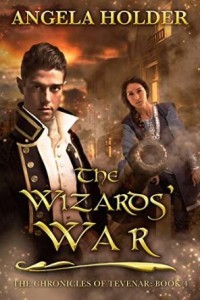 The Wizard’s War by Angela Holder:
The Wizard’s War by Angela Holder:
For the first time in its history, Tevenar is at war. The Matriarch of Ramunna, furious with the wizards she believes betrayed her, has sent the Armada to conquer and destroy. Armed with a secret weapon that makes them the unchallenged terror of the seas, the ships of the Armada descend on vulnerable Tevenar.
Elkan and Josiah, along with the rest of the Wizard’s Guild, scramble to rally the people of Tevenar to defend their home. The Mother’s power gives them a chance to stand against their foes, but alone it’s not enough. To defeat the Ramunnans, they must find a way to duplicate their enemies’ weapons. Josiah believes they can, because they’ve encountered a similar explosive before. But only one person in Tevenar knows how to make and use the deadly blasting powder—Meira, the woman Elkan once loved and rejected.
A desperate gamble…
Sanah would do anything to protect her little sister, even if it means taking refuge with ruthless pirates. But the psychically Talented pirates terrorizing Commonwealth space are not quite the monsters she has been led to believe. When Sanah’s empathic gift shows her the truth behind the stories, she is no longer certain who the villains are in her world.
A race on the verge of extinction…
Dem’s only goal is to protect his people, especially since a deadly bio-weapon decimated their population. Only a handful of women survived, and every day is a fight to rebuild. With Sanah’s empathy and her sister’s rare ability to heal, they could be the salvation Dem and his people have been looking for.
A dangerous secret that could destroy everything…
But how can Sanah trust Dem with her life? Especially when he’d kill her if he knew the truth.
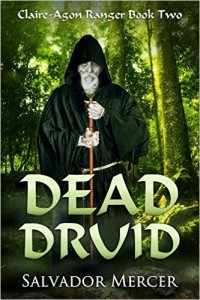 Dead Druid by Salvador Mercer:
Dead Druid by Salvador Mercer:
A thousand years ago, on the world of Claire-Agon, a war raged between men and dragons, destroying both the creatures and the land’s many civilizations.
Targon Terrel accepts his fate as a Ranger, a servant of the Mother and Defender of the Arnen. Having protected his fellow countrymen, he continues his battle against the sinister Kesh wizards, but he does not fight alone. Aided by unlikely allies, he presses his attacks to liberate Ulatha and its people.
The Kesh continue to dominate the realms of Agon, enslaving those of neighboring realms and seeking to obtain the one artifact that will ensure their perpetual domination of Agon forever.
Meanwhile, ancient evils stir from their long slumbers, moving to ensnare all within their reach as Dor Akun, Father Death approaches.
Evil prepares to cover the land and only one thing stands in its way, a simple Ulathan family that goes by the name of Terrel.
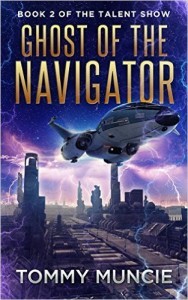 Ghost of the Navigator by Tommy Muncie:
Ghost of the Navigator by Tommy Muncie:
Three years on from the birthday party that left him crippled for life, Shadow is well on the way to wrecking what’s left of himself. When stealing morphine from a hospital almost lands him in prison, his family give him one more chance to clean up, and he takes it. By his 21st birthday, he’s six months sober and settling for a simple and honest life. Then an unexpected visitor turns up at Shadow’s home, with a new idea about how to get his body restored.
Everything comes at a price though, and the elusive Blake Stanford’s price is going to be more than Shadow wants to pay. Despite his loyalty to both Shadow’s family and the Talent Council, Blake has dangerous ideas. The kind that can either make history or get people put in prisons that don’t officially exist. If they live long enough to reach them.
The Serious Crimes Office are hot on the tail of Blake and his new protegé, and Shadow has made enemies out of people high up in the world’s most powerful organisation: The Seekers’ Council, known for making unpredictable people disappear without trace. A nosy journalist won’t stay out of Shadow’s personal life, and a crime boss who wants Shadow for her own plans will stop at nothing to own his allegiance. Is anyone truly his ally? The good doctor Kit Calloway still is, but keeping Shadow alive might just cost him more than his career this time.
Especially if the world’s most powerful Seekers discover Shadow’s true identity. Or the three tubes of Liquid Talent he once buried deep in a forest, and promised never to dig up unless lives depended on the secrets inside them…
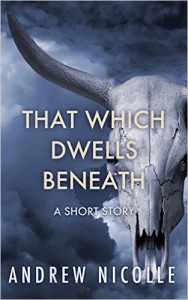 That Which Dwells Beneath by Andrew Nicolle:
That Which Dwells Beneath by Andrew Nicolle:
Detective Elliot Winter believes an innocent man may hang, framed for murders he didn’t commit. He’s convinced the condemned knows too much, and even if the man escapes the hangman’s noose, powerful people want him dead.
On the grounds of the abbey at the edge of town, the catacombs conceal terrible secrets. There are whispers of murder, ritual sacrifice, and worse. Winter cannot abide a world where such crimes are allowed to go unpunished.
In a race against time, Detective Winter risks his life and sanity to unravel a conspiracy concealing something far more sinister than even he can imagine.
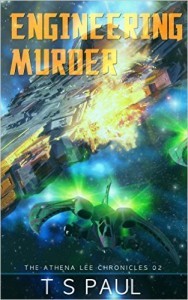 Engineering Murder by T.S. Paul:
Engineering Murder by T.S. Paul:
Ensign Athena Lee has finally been rescued. The galaxy has changed over the last fifteen years. She finds herself arrested, her rights taken away, and tortured. Political corruption has taken over. Now someone is out to kill her. With assassins and bounty hunters at every corner what is an Engineer to do? Use the right tool for the right job and Fix it!
This romance brought to you by the end of the world…
Freemont’s River Walk is romantic, exciting and has the best cafes and restaurants in the county. And the residents intend to keep it that way. They opened up the armory, fueled the World War II trucks and even got the ancient generators working. They turned on the lights.
To improve the security of the townspeople, they put up a fence, manned by the good soldiers from Crayton Industries, selflessly protecting the refugees, and the nurses and doctors that care for them in their selectively policed triage units.
Freemont is a beacon for the survivors of the War.
Come to Freemont: you’ll be fed, you’ll be warm, you’ll be safe…
And now Lane’s here.
And somewhere among all of those River Walk cafes and restaurants, the pretty church steeples and the good intentions, the snow covered maple trees and the street lights along Main, among the Cart People and the Button Eye plague…
Sam is too.
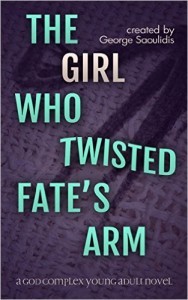 The Girl Who Twisted Fate’s Arm by George Saoulidis:
The Girl Who Twisted Fate’s Arm by George Saoulidis:
The gods are back in town. Skyscrapers pop out of nowhere all around Athens. Corporations rename themselves as Greek gods. It all started with the Greek crisis of 2009 and it will forever change the world as we know it. Some say that CEO’s have gone mad. Others, that they know damn well what they are doing. That there is something solid amongst the myth. In the day of inter-connectivity and social media admiration, can the myths come back to life?
When the daughter of Greece’s premier singer fails to sing as expected, she finds out about a biker group of women. But will she manage to find the elusive Orosa, the bikers’ motovlogger, when all she has to go on are random street-sightings of criminal behaviour, when her family is opposed to her following this path and when her dad’s employer wants to keep her as she was for marketing purposes?
Pete has a pretty good life these days: a job he likes, friends, and a boyfriend who accepts him as he is. But despite all this, life isn’t without its challenges — and dangers.
a Men of the ESRB novel
takes place after “KEEP” and contains the same characters
gay paranormal fiction
66,000 words
The Extra Sensory Regulatory Bureau rates talented individuals like empaths and clairvoyants. They have special gifts — and often some extra burdens that go along with them. The ESRB takes care of its own, but these guys still have a lot to figure out about life — and love. Stay tuned for more tales from the men of the ESRB.
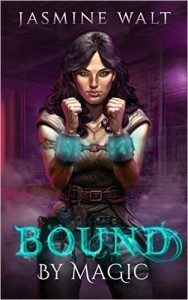 Bound by Magic by Jasmine Walt:
Bound by Magic by Jasmine Walt:
With the silver murders solved and her training as a mage underway, Sunaya figured her life would get easier. But between the Chief Mage’s packed schedule and the grunt work demanded of her as an apprentice mage, magic lessons are few and far between. Worse, her apprenticeship leaves little time for her job as an Enforcer, and without bounties Sunaya’s money pouch is drying up — fast.
Even so, when Shiftertown Inspector Boon Lakin asks for Sunaya’s help digging deeper into the murder of a fellow Enforcer, Sunaya has no trouble making room in her life to help him. The trail leads them to a series of crimes victimizing shifters for the entertainment of vicious humans. Sunaya and her friends race to identify the perpetrators and free the survivors, and the stakes are heightened when she discovers one of the victims has a connection to her. But if Sunaya is not careful, she may end up a very dead shifter herself…
 Send to Kindle
Send to Kindle
March 20, 2016
More on J.G. Ballard, High-Rise, Brutalism and Architectural Horror
Last week, I posted about J.G. Ballard’s 1975 novel High-Rise, Ben Wheatley’s recent film adaptation of said novel and about Brutalist architecture in general and its connection to science fiction. I also included several links to articles discussing the book and the movie.
In the meantime, I have come across some more articles about High-Rise. Interestingly, most articles about High-Rise I have seen come from architecture rather than film sites, which suggests that this is a movie that will appeal to architecture and design freaks. Which is okay, I mainly watched Mad Men for the vintage design porn as well. And coincidentally, Elisabeth Moss, who played Peggy Olsen in Mad Men, also appears in High-Rise.
Phaidon tackles the architectural aspects of High-Rise straight away and offers a Brutalist guide to the movie and book, courtesy of architectural historian Peter Chadwick.
Meanwhile, at uncube, Jon Astbury has an extensive interview with High-Rise director Ben Wheatley. Among other things, Ben Wheatley discusses the ideas that went into designing the look of the movie and also the problems of creating a believable building.
Ben Wheatley also discusses both the Doctor Who episode Paradise Towers, which is believed to be a sort of clandestine adaptation of Ballard’s novel, as well as David Cronenberg’s movie Shivers, which came out the same year as Ballard’s novel and bears some thematic similarities. See the original trailer for Shivers here.
Another thematically similar film about a high-rise apartment block turned scene of horror is the 1983 Dutch movie De Lift (The Lift). I don’t know if The Lift had any influence on High-Rise at all – at any rate, Ben Wheatley doesn’t mention it in the interview – but it’s a great movie nonetheless. The full movie in Dutch with English subtitles is available on YouTube, by the way. There is also an American remake from 2001 called The Shaft (also directed by Dick Maas, who directed The Lift), which goes for an Art Deco look instead of the modernist/brutalist sensibility of the original. The remake is available on YouTube as well.
For another work of high-rise and elevator related horror, also see Abwärts (Out of Order), a German thriller from 1984 starring Götz George, Hannes Jaenicke, Wolfgang Kieling and Renee Soutendijk. Once again, the movie is available on YouTube and well worth watching. Abwärts was shot in the so-called Silberturm (Silver Tower), a distinctive 1970s bank building in Frankfurt am Main and once Germany’s tallest building.
Finally, for movies featuring high-rise buildings as places of horror, there’s also the 1971 disaster classic The Towering Inferno, in which a newly completed skyscraper (portrayed by 555 California Street, a brutalist office building in San Francisco) catches fire on the night of its grand opening and kills a whole bunch of famous actors, including Robert Wagner, Richard Chamberlain and Jennifer Jones. A pre-murder-trial O.J. Simpson was also in the movie, though I have no idea, if his character survived or not.
Like many people who grew up during the 1970s and 1980s, I have a deeply conflicted relationship to the disaster movies of that era, because I clearly remember being terrified by many of them as a kid and not least of all because they killed off all the big stars (and for me the likes of Robert Wagner and Richard Chamberlain were big stars, because I knew them from TV, while I had no idea who Paul Newman or Steve McQueen were), which simply wasn’t supposed to happen. Meanwhile, rewatching these movies as an adult often reveals how corny and predictable they really are, while at the same time turning them into interesting period pieces.
However, no 1970s disaster movie has the potential to scare my adult self with one exception: I still don’t feel comfortable watching The Towering Inferno, though the fact that the last time I tried watching it was fairly shortly after the house across the road burned down, which caused the movie to trigger some latent PTSD I didn’t know I had, might have something to do with that.
Last but not least, there is also the original Die Hard from 1988 for another movie that features a skyscraper as a place of terror. The setting in this case was the postmodern Fox Plaza in Los Angeles, built in 1987, which to generations of moviegoers will always be the Nakatomi Plaza.
Coincidentally – and I for one did not know this – Die Hard was based on the 1979 novel Nothing Lasts Forever by Roderick Thorp, which in turn was inspired by the movie The Towering Inferno.
Films and books where high-rise buildings, particularly modernist and brutalist high-rise buildings, become places of horror were definitely a thing in the 1970s and early 1980s. Sometimes the horror is due to external sources (fire, terrorists), sometimes due to the people inside the building turning upon each other and sometimes it is supernatural or semi-supernatural in nature. But it’s definitely telling that even in the 1970s and 1980s, i.e. the prime period of Brutalism, when such buildings were touted as the very embodiment of progress and modernity in the Western world, people were eagerly producing stories where the very alienating nature of such buildings leads to horror. So J.G. Ballard’s novel definitely fits into the spirit of the times, so to say.
It’s also telling that the filmic versions of these high-rise horrors are quite often set in very new buildings that were only a couple of years old at the time of filming, if that. And yes, most of them are Brutalist – the postmodern Fox/Nakatomi Plaza being the big exception here.
So with a renewed interest in Brutalism, including a renewed filmic appreciation of the style, it was only a matter of time before the architectural horror movie of the 1970s/early 1980s made a return as well. The film version of High-Rise seems to herald this return.
 Send to Kindle
Send to Kindle
Hugo Season 2016: The Return of the Puppies
The deadline for the 2016 Hugo nominations and 1941 Retro Hugo nominations approaches fast, so we’re seeing the annual increase in pre-Hugo nomination chatter. BTW, if you were a member of Sasquan, MidAmeriCon II or Worldcon 75 before January 31, 2016, go here to nominate.
The nominees for the Hugo Awards have been contentious since forever and you can see my take on and summary of previous debates here. However, in the past two years, particularly the last year, the annual Hugo nomination controversy has been cranked up to eleven due to the so-called Sad and Rabid Puppy campaign. If you don’t know what I’m talking about, just read the posts linked above, cause it’s all there.
The Sad Puppies are at it again, for the fourth consecutive year, and announced their recommendation list last Thursday. The link goes to File 770, where the list was reposted, just in case you don’t want to visit the Sad Puppy site itself. There is also a lot of discussion in the comments.
Meanwhile, occasional Sad Puppy fellow-traveller Vox Day has been posting his own Rabid Puppies slate in bits and pieces over the past month or so. Once again, the tireless Mike Glyer at File 770 has reposted the Rabid Puppy picks, so click here, if you don’t want to wade through the morass that is Vox Day’s blog.
Leaving aside the Rabid Puppies for now, one thing that is notable is that the Sad Puppy list for 2016 a) contains up to ten choices in many categories rather than just five and b) contains works like e.g. Ancillary Mercy by Ann Leckie, Binti by Nnedi Okorafor, Hungry Daughters of Starving Mothers by Alyssa Wong, The Long Way to a Small, Angry Planet by Becky Chambers or The End of All Things by John Scalzi that don’t look like obvious Puppy picks at fist, second and third glance.
So it seems that the Sad Puppy 4 organisers headed by Kate Paulk did stick to their word and created their list based on all recommendations they received and not just those of puppy affiliates. What is more, they also posted a list of ten recommendations in many categories, making a puppy sweep due to bloc-nominating like last year less likely.
This is a good thing.
Nonetheless, following last year’s controversy, a lot of people are less than thrilled to find themselves on the Sad Puppy list.
Alastair Reynolds, whose novella “Slow Bullets” is on both the Sad and Rabid Puppies list, requested to be removed and was promptly inundated with angry comments from irate Puppies.
Catherynne M. Valente, whose novella “Speak Easy” is also on the Sad Puppies list, was initially furious, especially since she was one of the puppy targets last year, but eventually decided to give the Puppies the benefit of the doubt, at least for now, though she reserves the right to change her mind. Oh yes, and Catherynne Valente was also inundated with angry comments from irate Puppies on social media.
John Scalzi, whose novella The End of All Things 1: The Life of the Mind is also on the Sad Puppies list, points out that he has withdrawn all his 2015 works from awards consideration, and that putting people and their work on a nomination slate against their will is kind of arseholish. No irate comments from Puppies this time, at least not at Whatever, because Scalzi wisely closed the comments.
Several people who did not find themselves on either puppy list weighed in as well:
Rachael Acks says that she wishes she could trust that the Sad Puppies have changed, but given their history, she remains sceptical. And of course – I sense a pattern here – she promptly receives hostile comments from angry Puppies.
At Crime and the Forces of Evil, Dara Korra’ti is pleased that the Sad Puppies seem to have mended their ways and points out that she objects not to recommendation lists per se, but to the Puppies’ culture war rhetoric and their ballot stuffing. She also points out that we still need the E Pluribus Hugo amendment to the World Science Fiction Society statutes in order to prevent any group of any political orientation from exploiting the flaw that the Puppies exploited last year again.
At nerds of a feather, the G declares that he feels that Sad Puppies 4 have abandoned their strident culture war rhetoric for now and make some decent recommendations.
At Blue Author Is About To Write, Alexandra Erin wonders about the possible motives behind this year’s Sad Puppy list and points out that the best thing to do is to ignore the Puppies altogether, since they will probably claim victory anyway, regardless of what happens.
As for myself, I’d like to believe that the puppies have changed (at least the Sad Puppies, Vox Day remains his ever charming self) and learned from last year’s mistakes. At least, the Sad Puppy 4 organisers have done what they said they’d do, namely crowdsource recommendations and create a list of the most recommended items regardless of pedigree. Given the intransparent way in which Brad Torgersen created his list last year, this is a great improvement, as is the fact that they offer more recommendations than slots in many categories.
As for the non-obvious choices on the Sad Puppy list, I don’t necessarily assume any malicious afterthought there. What I presume happened is a) the Sad Puppy supporters’ taste is not as out of tune with the rest of fandom as they believe, or b) people not affiliated with the Sad Puppies took them by their word and offered recommendations, which promptly ended up on the final list, because the Puppy supporters either aren’t as numerous as they believe or maybe too burned out from last year and too busy with the upcoming US election to care.
Nonetheless, I sympathise with those who find themselves on the Sad Puppy list against their will and want their names removed. Because the truth is that after three years of increasingly unpleasant shenangigans, including ballot-stuffing, racist, sexist and homophobic rhetoric by some outspoken Puppy representatives (note that I said some, not all of them), attacks on previous Hugo winners and anybody who dared to disagree with the Puppies and last year’s spokespuppy wanting to evict works he doesn’t like from the genre altogether, the Sad Puppy brand has become toxic.
I think few people would have minded finding their name on a recommendation list – at least, I know I’ve always been flattered the few times I’ve found my name on such a list – even if the list was compiled by people with whose politics they disagree. Nor do I think that e.g. Catherynne Valente or Alastair Reynolds hate conservative readers, as some commenters insinuate. Because writers normally don’t care about their readers’ politic al views. I certainly don’t. Though I have to admit that I’m always a bit surprised when I find prepper fiction (a subgenre whose readership tends towards the right) in the also-boughts of my post-apocalyptic works. If only because people who want to read how the right people with enough guns, ammunition and cans of beans can totally survive the apocalypse will probably be very disappointed with my works, which have no shooting, characters who are neither white nor straight and a lot of people dying.
Nonetheless, the reason why many writers don’t want to be associated with the Sad Puppies, let alone the Rabid Puppies, is not because they hate conservatives, but because the Puppy brand is unbelievably toxic by now. Never mind that the experience of last year’s Puppy shield nominees, i.e. people who were not directly affiliated with the Puppies, were otherwise reasonable nominees (e.g. Jim Butcher, Kary English or many of the nominees in the editor categories) and yet still found themselves ending up under “No Award”, shows only too clearly why a lot of people don’t want to be associated with the Sad Puppies in any way.
Besides, the flood of negative comments, which everybody who either requested to be withdrawn from the Puppy list or who was sceptical of the Puppies’ motives received, shows that at least some of the Puppy followers haven’t changed their ways at all. So if your followers heap abuse on everybody who dares to disagree with you, is it any surprise that a lot of people want nothing to do with you?
As for what to do, I am inclined to agree with Alexandra Erin and simply ignore the Puppy lists (both Sad and Rabid). Because it turns out that there is some overlap between my personal nominations and the Sad Puppy list and – to my infinite surprise – even the Rabid Puppy list. My Mom – who wants to attend Worldcon 75 in Helsinki and is thus eligible to nominate – also has some overlap with both Puppy lists, e.g. she is a big fan of Jim Butcher’s. I guess the old German saying that even a blind chick find a grain of corn on occasion applies here. Even Puppies sometimes find something decent to recommend.
And so I am not going to let the fact that the Sad or Rabid Puppies happened to like something influence my nominations. I will respect people’s wishes not to be nominated this year or ever (John Scalzi, Mary Robinette Kowal and Annie Bellet are some names that come to mind), but otherwise I will nominate what I enjoyed most, regardless of who else happened to enjoy the same thing.
As for voting, I will follow the same strategy as last year and the year before. If I like a work, I will rank it accordingly, regardless of how it got onto the ballot. If I don’t like a work, it goes under “No Award”, again regardless of how it got onto the ballot. If the creator of a work is a horrible person, the work will have to be knock-your-socks-off amazing to make me forget that fact.
Finally, if you are eligible to nominate, i.e. if you were a supporting or attending member of either Sasquan, MidAmericonII or Worldcon 75 before January 31, 2016, please nominate whatever 2015 works you read/watched and enjoyed. Because the more of us nominate, the less likely it becomes that any small but organised group floods the ballot with their choices.
And if you’re still looking for recommendations beyond the Puppy lists, check out the excellent Hugo Nominees Wiki and the equally excellent Hugo Spreadsheet of Doom.
ETA: At File 770, Mike Glyer has collected some responses from the Puppy camp to the withdrawal requests of Catherynne Valente and Alastair Reynolds. They usually boil down to “Who do these people think they are anyway?” and “How dare they insult their fans?” and “We will never buy their work again (even though we didn’t know who they were until two days ago)” with the usual noisy Puppy rhetoric.
And the Puppies wonder why no one wants anything to do with their brand.
Comments are closed for obvious reasons.
 Send to Kindle
Send to Kindle
March 18, 2016
Remembering Guido Westerwelle
Yesterday, Guido Westerwelle, former head of the liberal party FDP and German foreign minister in the second Merkel cabinet from 2009 to 2013, died aged only 54. Westerwelle was diagnosed with leukaemia in 2014, but was until recently believed to be recovering.
I did not necessarily agree with Mr. Westerwelle’s politics, though I always liked him as a person and did not agree with the ridicule heaped on him for his sometimes unorthodox campaigns and ideas. But there was one thing I always admired about Guido Westerwelle and that is that he was one of the first openly gay politicians in Germany and the first openly gay cabinet minister. And he wasn’t just a second and third rate cabinet minister, but our foreign secretary and Germany’s representative in the world.
A lot of people – even people I wouldn’t classify as outrightly homophobic otherwise – had issues with being represented by a gay man in the world. However, I always loved the idea that every foreign dignitary who came to visit Germany – no matter from what homophobic and backwards country they originated – would have to shake the hands of not one, but two gay men – Guido Westerwelle and former mayor of Berlin Klaus Wowereit (who, at least as far as I remember, was the first big name German politician to come out as gay, a few years before Guido Westerwelle). And they couldn’t even refuse, because to do so would be impolite.
I loved the idea that Guido Westerwelle took his husband Michael Mronz along for state visits just like a heterosexual male politician would take his wife and that he ignored any sly “Well, maybe you should leave him at home, cause some things are just not done” advice. It always made me smile to see Michael Mronz – sometimes together with Angela Merkel’s husband Joachim Sauer – touring touristic sights with all the political wives. Because this sent a big signal to all the bigots, both in Germany and abroad, that LGBT relatioships are normal, as normal as heterosexual couples.
Given the current political climate in Germany, it is also worth remembering that Angela Merkel’s second cabinet from 2009 to 2013 was the most diverse in German history with a woman chancellor (and several women as ministers), a wheelchair user as secretary of finance (Wolfgang Schäuble), a gay men as foreign secretary (Guido Westerwelle) and a man of colour (Philipp Rösler, who was born in Vietnam and later adopted by a German couple) first as the secretary of health and later as secretary of economics. There was also a cabinet minister who was strongly believed to be lesbian, but since she never came out publicly, we shall respect her privacy. What makes this diverse cabinet even more remarkable is that is was not the cabinet of a leftwing government, but of a conservative-liberal, i.e. center-right coalition.
Because Guido Westerwelle’s party FDP is liberal in the European sense, i.e. pro-business and pro-low-taxes, but socially liberal, i.e. closer to what Americans call “libertarian” and not “liberal” as a synonym for “left”, as many Americans tend to use it (which I’ve never gotten – honestly, folks, words have meanings and “liberal” does not mean “left”).
The fact that a conservative-liberal government just happened to have the most diverse cabinet in German history and that this was mostly no big deal except for a few grumbling bigots also shows how much the country has changed for the better. This is important to remember, especially now that a xenophobic party of rightwing bigots (the AfD and no, I’m not using cutesy euphemisms like “national-conservative”, cause bigots is what they are) is gaining voters, particularly but not limited to East Germany.
A lot of commentators blame the rise of the AfD in certain benighted demographics on Angela Merkel who has allegedly moved the conservative party CDU too far to the left and thus alienated conservatives. This always infuriates me, because IMO the great victory of Angela Merkel is that she turned the CDU into a party – and I never thought I would ever say this – that you can vote for without feeling bad about it. Angela Merkel quietly got rid of the xenophobic and racist elements in her party, the ones who hated anything that wasn’t straight, white, German and petit-bourgeois. And the conservative-liberal coalition of the second Merkel government and its diverse cabinet were a beacon in that regard, a beacon that centre-right no longer came part and parcel with ugly bigotry, but that a centre-right government could still be the most diverse in German history and have women, LGBT people, people of colour and disabled people and make absolutely no big deal of it.
The second Merkel government was a big fat signal to the jerks who now support the AfD that their straight, white, bio-German, Christian and petit-bourgeois country is a thing of the past, no matter how much they might want to cling to it. Guido Westerwelle was a big part of that and that’s reason enough to mourn him, whether you agreed with his politics or not.
 Send to Kindle
Send to Kindle
March 15, 2016
J.G. Ballard, High-Rise and Brutalist architecture as instant dystopias
In the past few weeks, there has been a flurry of articles and posts about J.G. Ballard’s 1975 novel High-Rise, inspired by Ben Wheatley’s film adaptation, starring Tom Hiddleston, which opens in the UK this week, following a sort of adaptation as the Doctor Who episode Paradise Towers back in 1987.
At the Guardian, Sam Jordison discusses both whether High-Rise is a surrealist novel and how the detached tone of the book poses a moral challenge to the reader. Meanwhile, Christopher Fowler discusses the psychotic London that J.G. Ballard describes in High-Rise and other novels of the period.
The movie High-Rise looks gorgeous BTW, which marks a pleasant change from the Doctor Who episode Paradise Towers, which tells an interesting story, but is serious marred by low production values. However, High-Rise offers something both for architecture and design freaks as well as for fans of Mr. Hiddleston. Though it’s probably not a movie for dog lovers, knowing how dogs fare in J.G. Ballard’s novel. Here is a trailer.
There is also this faux advertisement for the titular building of High-Rise:
One I saw those trailers for the first time, I was stunned by how very much production designer Mark Tildesley nailed the look of the early to mid 1970s. Coincidentally, the films also nails the look of the science fiction films of that era – all of which inevitably were dystopian before Star Wars came along and changed everything – which makes it eerily appropriate for the film adaptation of a 1970s dystopian novel.
However, the most interesting article about High-Rise is this one by Oliver Wainwright in the Guardian, which views both novel and movie in the context of the Brutalist architecture of the 1960s and 1970s as well as of contemporary luxury skyscrapers being built in London and elsewhere. The article also features a great photo of Ernö Goldfinger, the British architect who managed to inspire both the eponymous Bond villain as well as the sinister architect of Ballard’s High-Rise who just happens to live in the luxurious penthouse just as Ernö Goldfinger once lived on the top floor of one of his most famous buildings, the Balfron Tower in London.
The adaptation of High-Rise comes at a time where there is a revived interest in and appreciation for Brutalist architecture, ironically while many of those buildings are being torn down and destroyed as eye-sores. Meanwhile, Brutalist buildings in the UK are also among the biggest attractions of the annual open house weekend, often the very same buildings I used to walk past and ignore as a student only twenty years ago.
On the one hand, the renewed interest in Brutalism manifests itself in the campaigns to save such classic Brutalist buildings as the Robin Hood Gardens estate in London (still standing so far), Birmingham’s Central Library (currently being demolished) or the Tricorn Shopping Centre in Portsmouth (gone since 2004). On the other hand, it also manifests itself in the sheer amount of mostly British films and TV shows, which use Brutalist architecture as settings and background, with the camera often lovingly travelling over the crumbling concrete to the point that I have dubbed this aesthetic (featuring prominently in Misfits, but also found in Luther, Hustle, Spooks, The Fades and others) “council estate punk”. The film adaptation of High-Rise fits right in here, because it looks like prime council estate punk, coupled with currently popular dystopianism.
The revival of Brutalism is fascinating, given that these buildings are incredibly ugly, hard to love, often vehemently hated by the public and have a horrible reputation as a hotbed of all sorts of social ills. Indeed, the sheer ugliness of these buildings is probably part of what makes them so fascinating and iconic. A lot of the current British Brutalism revival seems to be a defiant celebration of the sheer ugliness of these buildings. I even sympathise – something I never thought I’d ever say, considering how vehemently I hated modernist and Brutalist architecture as a teenager – because a lot of the more iconic Brutalist buildings are truly fascinating in their ugliness. I find that I experience a pleasant shudder when I look at a particular notable example of Brutalism – something like Ernö Goldfinger’s Trellick and Balfron Towers, Robin Hood Gardens, the Birmingham Central Library or the Alexandra Road Estate in London. I also find myself snapping photos, because a building that awful must be recorded for posterity, since it will either be gone or renovated beyond recognition in a few years time.
Another part of the appeal of Brutalist buildings is that they are science fiction become concrete. These buildings began as utopian visions for a better life for ordinary people (and it is notable how many of the great icons of Brutalism are either social housing estates or civic buildings of some kind like schools, universities, museums, libraries, sports facilities, etc…, i.e. buildings for the people) that quickly degenerated into instant dystopias.
In fact, the utopian intention behind those buildings is at least part of the impetus behind saving them. No matter how ugly many of them were, these were buildings for the people and not just the wealthy and the middle classes either (and High-Rise – both novel and film – serve as reminders that these estates were once viewed as housing for the aspirational middle classes, even though they became associated with the lower classes later on), but for the working class as well. No matter how flawed, housing estates like Thamesmead, Robin Hood Gardens and the Balfron Tower (the latter two conveniently located right across from Canary Wharf with its gleaming bank towers) offer some of the last affordable social housing in central London. And that alone is reason enough to save them, because you know that once they go down, whatever is built in their stead will be luxury flats of some kind and no longer offer any place for the poor. Indeed, the attempt to get rid of the current social housing tennants and create flats for the bankers of Canary Wharf is rather obviously the motive behind the attempts to demolish Robin Hood Gardens. Meanwhile, the Balfron Tower has been privatised and the social housing tennants “decanted”, as this Guardian article puts it euphemistically. It almost sounds like something from a J.G. Ballard novel.
What is more, Brutalist architecture also is the iconic look of 1970s visual science fiction. If you squint a little, Brutalist buildings look like something from A Clockwork Orange (shot at least partly in Thamesmead and the Barbican, both Brutalist icons), Rollerball, Logan’s Run (shot at the Dallas Market Center), Soylent Green or Star Wars (which features the iconic BMW Headquarters in Munich). There is something incredibly cinematic about Brutalist buildings, which is why so many of them have been used as film sets. If you take a stroll through Thamesmead, you expect to walk right into Alex and his droogs or the Misfits gang in their orange overalls. If you walk past the Balfron Tower, you cannot help but remember how it was overrun with zombies in 28 Days Later and also featured in the Oasis video “What’s the Story, Morning Glory?”. In fact, I spent years referring to the Balfron Tower as “the morning glory building”, because I didn’t know it’s proper name.
Oh yes, and the Balfron Tower was designed by a genuine Bond villain or at least the model for one, while John Poulson, the Yorkshire architect who wound up in prison for bribing officials, was the model for memorable morally dubious to outright villainous characters in works such as the TV shows Our Friends From the North and Ashes to Ashes as well as David Peace’s Red Riding Quartet and the TV adaptation thereof, which is only a trilogy for some reason. Of course, the real Ernö Goldfinger never gold-plated ladies, attempted to slice off the genitals of heroic MI6 agents or nuke Fort Knox and while John Poulson may have bribed officials, he was never involved in a massive kidnapping and sexual abuse scandal as in David Peace’s novel. Nonetheless, there is something larger than life about those buildings and the men who designed and built them. Brutalist buildings are science fiction dystopias designed by men who may not have been bonafide supervillains, but who certainly inspired them.
I have a recurrent dream of walking through the endless corridors of a gigantic sprawling Brutalist complex, often lost, often trying to get someplace that I never reach. There are lifts that get stuck, staircases that lead into nowhere, walkways and open atriums. The dream varies a bit. Sometimes the building is a space station or a space ship or an undersea base. Sometimes, I am chased by zombies or Stormtroopers or – in one memorable version – a mob of protesters throwing wrapped gifts. Sometimes, I am a secret agent on a mission, trying to rescue someone or get crucial information to someone important. Sometimes, I am merely on the run. I have had variations of this dream for almost thirty years now and it is easy to see where it comes from, namely from bits and piece of movies I’ve seen, combined with the buildings, many of them Brutalist, I remember from my youth. And since I have an interest in architecture, my dreams usually feature architectural details.
My generation has a curious love and hate relationship with Brutalism, because we were the generation which grew up inside these failed dystopias of our parents’ generation. My highschool, my university and the church where I was baptised and had my confirmation were all Brutalist buildings (coincidentally all long since refurbished, often beyond recognition). I never lived in a Brutalist building, apart from spending a few memorable months in this Dutch apartment block that sits at the borderline between Brutalism and Postmodernism (it was a great building BTW), but many of my generation did. And though a lot of us intensely disliked these buildings growing up – I certainly did – they are also inevitably tied up with memories. Seeing them demolished or refurbished beyond recognition is also a destruction of our youth, often even more difficult to grasp, because those buildings were not just futuristic, they also looked solid enough to survive a nuclear war or the zombie apocalypse. Seeing them going down is seeing the impossible.
 Send to Kindle
Send to Kindle
March 14, 2016
Photos: Springtime Crocuses
After a mild start to the winter with overeager trees blooming in December, the first two and a half months of 2016 got off to a cold start. Hence, there aren’t a whole lot of signs of the coming spring yet.
However, there are a few, including crocuses (or croci, if you prefer the grammatically correct Latin version) blooming in my garden. So here are a few photos:

Bright purple crocuses in my garden.

White crocuses/croci in the garden.
 Send to Kindle
Send to Kindle
March 13, 2016
Rest in Peace, Sir Ken Adam
On Friday, one of my personal heroes, Sir Ken Adam, died aged 95.
Even if you’ve never heard the name Ken Adam, you’ll probably recognise his work when you see it, for Ken Adam determined our ideas of what a supervillain lair is supposed to look like. He was the production designer on the James Bond movies from Dr. No all the way up to Moonraker and gave us such visual delights as submarine swallowing supertankers, Bond’s famous tricked out Aston Martin, the only slightly less famous Lotus Esprit that turns into a submarine, a translucent waterbed with real fish inside, the glittering interior of Fort Knox that looked so much cooler than the real thing probably did, undersea bases and space stations, Alpine lairs and rocket launch pads, genital slicing lasers and of course Blofeld’s volcano lair cum rocket launch pad, complete with monorail and piranha pond. The Guardian has a gallery of some of Ken Adam’s famous designs.
In these days of ubiquitous greenscreen and CGI, it is hard to imagine that all of those sets were physical and specifically built for the respective films. But if you look at a vintage Bond movie from the 1960s or 1970s, you’ll notice how real those sets look. When I watched those movies for the first time as a kid, I actually thought they were real places and that there were really hollowed-out volcanoes and mountaintop supervillain lairs out there in the world somewhere. The first time I saw an actual waterbed, I was disappointed that it was neither translucent nor contained any living goldfish like the one in Diamonds Are Forever.
Nor am I the only person who mistook Ken Adam’s designs for real. During the Cold War, East European intelligence services eagerly watched Bond movies to see what the enemy was doing and what cool tech they had. The KGB reportedly even tried to order an example of Bond’s gadget-laden Aston Martin, only to be told that the actual car doesn’t have any of those functions. And Ronald Reagan – who used to be an actor, after all, and should have known how filmic illusions work – reportedly asked to see another famous Ken Adam set, the NORAD War Room from Dr. Strangelove or How I learned to stop worrying and love the bomb, when he visited the real NORAD shortly after his inauguration as President.
Of all of Ken Adam’s designs, it’s the volcano lair from You Only Live Twice that has stuck with me most. Seeing that volcano lair for the first time on TV, I immediately exclaimed “I want to live there.” With the rocket, the monorail and everything, though I would have swapped the piranhas in the pool for goldfish. And in my early attempts at writing, everybody – both heroes and villains – had elaborate secret lairs hidden in seemingly innocuous places. There was an undersea spaceport, too, that was clearly inspired both by the Blofeld’s volcano lair from You Only Live Twice and the underwater spaceport from Raumpatrouille Orion (and I strongly suspect the latter was inspired by the former as well). Coincidentally, I’m pretty sure I’m not the only person who wanted to move into the sets of the Bond movie. I sometimes do translations for a company that builds mega-yachts for the ultra-rich and a lot of the time the specs boil down to “Someone has seen too many Bond movies and thought they were real”. More precisely, they all want to own some variation of the Disco Volante, Emilio Largo’s yacht from Thunderball.
I have the theory that the true reason why the Bond movie franchise survived both replacing the lead actor several times and having fuck-all to do with the actual Ian Fleming novels after the first few movies is because what makes a Bond movie is not so much the actor playing the lead role nor the Fleming novel it’s supposedly based on. Of course, all Bond movies contain certain set pieces, but what sets them apart from umpteen other action franchises is that Bond movies have a certain look and style. Tune into any Bond movie at random and it is immediately recognisable as a Bond movie, even if neither Bond nor any other recognisable character is on screen. And this Bond film look was largely defined by Ken Adam, along with Maurice Binder who designed the distinctive psychedelic title sequences with the floating nudes, and composer John Barry, who created the sound of Bond films. All three are dead now, but their legacy remains and not just in Bond movies either.
I don’t remember when I first heard Ken Adam’s name. It must have been during my cineastic phase as a teenager and I must have either read it in a book somewhere or picked it up directly from the credits of a Bond movie. But while I have known his name for a long time and have admired his designs for even longer, it was only years later that I learned that Ken Adam had been born in Germany, in Berlin to be exact, as Klaus Hugo Adam. And that he had been at least partly inspired by the dull Bauhaus modernism that I loathed with a passion. Though as an adult, I can clearly see both the Bauhaus influence (especially if you know that a lot of what was actually built was watered down Bauhaus) and the influence of German expressionist cinema of the 1920s on Ken Adam. I also suspect that this is why German cinema of the 1960s is full of Ken Adamsesque sets – because they were all drawing on the same inspirations.
Coincidentally, I also wonder how Ian Fleming felt about Ken Adam’s designs for the Bond movies, given his well-known dislike of modernist architecture in general and of architect Ernö Goldfinger in particular, a man Fleming disliked so much that he named one of his most famous villains after him. This isn’t Ernö Goldfinger’s only claim to literary fame BTW, he was also reportedly the inspiration for the sinister architect in J.G. Ballard’s novel High Rise, which has just been filmed with sets that look like something Ken Adam might have come up with in the 1970s.
I obviously wasn’t the only person who was inspired by Ken Adam’s glorious designs. You can see his influence in many movies he never worked on. The later 1960s birthed dozens of cheap Bond knock-offs with plywood and cardboard sets that look like Ken Adam on a budget. Here is one of the better examples, Die Todesstrahlen des Dr. Mabuse from 1964, with a very Ken-Adam-like supervillain lair. Poor Dr. Mabuse, a true legend of villainy with a ninety year reign of terror and yet he was never able to afford a real Ken Adam lair.
Ken Adam’s visual influence also extended beyond the Bond knock-offs of the late 1960s. The Imperial Star Destroyers, the Death Star and the Starkiller Base of the various Star Wars installments are very clearly influenced by Ken Adam’s designs for the Bond movies and Dr. Strangelove, as are the Triskelion and the S.H.I.E.L.D helicarrier from the Marvel movies. Ditto for the Stark/Avengers Tower and Tony Stark’s Malibu home (with a bit of Oscar Niemeyer thrown in for good measure). Ironically, a lot of these movies were shot at the 007 Stage at the Pinewood Studios in London, which was specifically built to house Ken Adam’s set of the submarine swallowing supertanker from The Spy Who Loved Me.
So rest in peace, Sir Ken Adam. I still want to live in that volcano base BTW.
 Send to Kindle
Send to Kindle
February 28, 2016
Indie Speculative Fiction of the Month for February 2016
 It’s that time of the month again, time for “Indie Speculative Fiction of the Month”.
It’s that time of the month again, time for “Indie Speculative Fiction of the Month”.
So what is “Indie Speculative Fiction of the Month”? It’s a round-up of speculative fiction by indie authors newly published this month, though some January books I missed the last time around snuck in as well. The books are arranged in alphabetical order by author. So far, most links only go to Amazon.com, though I may add other retailers for future editions.
Once again, we have new releases covering the whole broad spectrum of speculative fiction. We have space opera, military science fiction, science fiction romance, paranormal romance, epic fantasy, urban fantasy, historical fantasy, horror, steampunk, alternate history, post-apocalyptic fiction, lots of young adult SFF, witches, demons, zombies, intergalactic conspiracies, alien invaders, were-foxes, magical swords, beleaguered queens, alternate history PIs, Valentine’s Day in space, Victorians in space, increasingly transparent girls, bioengineered jellyfish terrorists and much more.
Don’t forget that Indie Speculative Fiction of the Month is also crossposted to the Speculative Fiction Showcase, a group blog run by Jessica Rydill and myself, which features new release spotlights, guest posts, interviews and link round-ups regarding all things speculative fiction several times per week.
As always, I know the authors at least vaguely, but I haven’t read all of the books, so Caveat emptor.
And now on to the books without further ado:
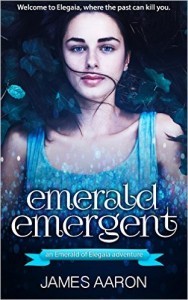 Emerald Emergent by James Aaron
Emerald Emergent by James Aaron
Emmie’s mother never lets her forget that an obsession with ancient magic killed her father and left Emmie horribly scarred.
When her best friend Bryte offers Emmie a chance to explore an ancient city, Emmie is torn between her father’s sense of adventure and her mother’s common sense. She also can’t deny her fascination with bookish Bryte.
Following her heart, Emmie will face her fears and discover secrets bound to change her life forever. . . once she chooses to stand up and fight.
Book 1 in the Adventures of Emerald of Elegaia, a thrilling new science fantasy series offering a world of action and romance to explore and love.
Welcome to Elegaia, where the past can kill you.
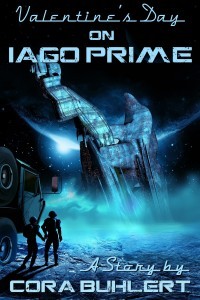 Valentine’s Day on Iago Prime by Cora Buhlert
Valentine’s Day on Iago Prime by Cora Buhlert
Kai and Maisie are about the celebrate their first Valentine’s Day on the planet Iago Prime. However, the holiday traditions they established back on Earth such as celebrating Valentine’s Day with a picnic on the beach are impossible to maintain in the hostile environment of their new home. But in spite of the many limitations imposed by living on Iago Prime, Kai pulls out all the stops to give Maisie an unforgettable Valentine’s Day.
This is a science fictional Valentine’s Day story of 2200 words or approx. 10 print pages.
For Charles, responding to Station 332’s emergency help request starts out no different than any other mission. She’s been paired with a near-retirement medic, Robin, and a lax mechanic, Jay. Their job is simple: check the station, kill any threats, provide assistance if needed, then return to Central.
But this is unlike any assistance request Charles has been on before.
Someone or something has destroyed the station, smashing the control panel and upending equipment. They find two bodies–murdered–in the bedroom, and the third staff member is missing.
Robin labels it a murder-suicide, but Charles has doubts.
Something is killing Central’s best fighters, leaving humanity defenceless. It’s spreading quickly. And the danger lives closer to home than anyone ever expected…
Station 332 is a short story in the five-part Cymic Parasite Breach series. Each story can be read independently.
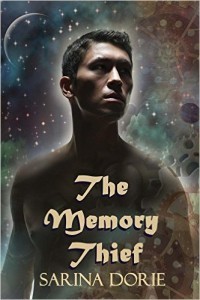 The Memory Thief by Sarina Dorie
The Memory Thief by Sarina Dorie
What would the Victorian era look like if they had “rediscovered” space flight? Would the British really be interested in colonizing the continent of America if they could colonize an entire planet?
Imagine a Neo-Victorian alternate history romance set on a shogun-like planet. Felicity is a young lady betrothed to a British noble of rank and fortune who will someday inherit a space station. Her life should be happy and perfect. Alas, she fears she will never achieve happiness—or wholeness—until her memories have been returned by the man who stole them.
In pursuit of her past, Felicity returns to an alien planet where she once encountered descendants of Japanese colonists from Earth who had settled millennia before. After a seven year absence, she finds the world much changed. The climate and geography have been altered, the planet has been colonized by her own Victorian culture, destroyed by unethical surveyors, and she is told the man she believes may have stolen her memories—a man she once loved and trusted—is dead. Her only hope for finding answers about her mysterious past is performing the Jomon courtship ritual of memory exchange. The idea of trusting another man enough to perform the ritual after what she has been through is too much and she doesn’t know if she can go through with it. Worse yet, she finds herself falling in love with the alien planet’s leader, even though she is already engaged. Only when she learns to let go of her fears can she learn the secrets that may aid in the freedom of the Jomon people—and herself.
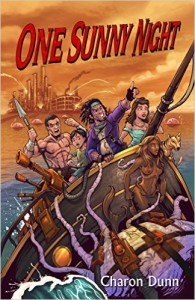 One Sunny Night by Charon Dunn
One Sunny Night by Charon Dunn
On March 20, 3748, terrorist clones in submarines made of bioengineered jellyfish attacked the stadium where fifteen-year-old Sonny Knight was watching the
clashball championship game, kidnapping his family and his two best friends.
But the day wasn’t a total loss. Sonny got to meet one of his favorite sports heroes, he got a new dog, and he ran into an extremely tattooed man who has a really fast ship. Which might have been fast enough to get Sonny safely home in a couple of days if they hadn’t run into the tsunamis, and the pliosaurs, and the cattle stampede, and more clones, and all those other complications.
Complications fly fast and furious in this fast-paced adventure story set in a far future in which the climate has changed significantly, making travel difficult.
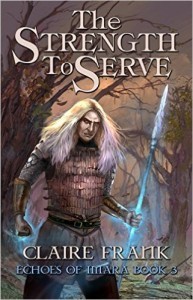 The Strength to Serve by Claire Frank
The Strength to Serve by Claire Frank
Home after their long absence, Daro and Cecily want nothing more than to pick up the pieces of their life and return to normalcy. But outside events intrude and the memories of what they lived through aren’t so easy to leave behind.
Pathius languishes, an unchained prisoner in a foreign land, doubtful of his place in the world. In Imara, he is offered a chance for a new life, if he can release the ghosts of his past and accept the man he has become.
As an invading army threatens their homeland, Daro, Cecily, and Pathius are drawn back into the political turmoil of Halthas. An assassin wreaks havoc in the city, a dangerous artifact is stolen, a force bent on conquest marches toward their border, and they all must take up arms to defeat an enemy their kingdom is not prepared to face.
 Lay Me Down by Tamara Hart Heiner
Lay Me Down by Tamara Hart Heiner
Life is more than just breathing.
Kylee Mansfield knows what it is to be alone. Her dad left when she was seven, and her mother remarried an abusive alcoholic. Kylee finds ways to escape reality, usually by substituting one pain for another.
Things take a deadly turn when a jagged cut shows up on her arm, and she doesn’t know where it came from. She enlists her neighbor, Price Hudson, to help her uncover the truth. But Price shows her much more than just her past—he shows her what it is to be alive.
A heartbreakingly beautiful teen/young adult paranormal romance that will chill you to the core.
After rescuing Annette Funicello’s stand-in from the amorous clutches of Guy Williams, Stan Wade, young, LA-based PI, gets a new, but secret, assignment from his number-one client, Walt Disney. The elder cartoonist and filmmaker wants Stan to investigate a death at Edwards Air Force Base. The victim, who drowned while testing an outer-space uniform, was the eighth astronaut candidate for America’s new space agency, NASA. Working out of his cramped office in the back of the Brown Derby restaurant where he’s employed as a part-time “bouncer,” Stan uncovers much more than a suspicious death…putting his own life—and the lives of those closest to him—in danger.
An Alternate History Mystery
All Emma wanted was to sell her enchanted teas in peace; instead, she’s caught up in the chase for a killer who’s stalking the streets of London. He’s targeting half-bloods, people with limited magical ability. People just like Emma.
The police are baffled by the long string of deaths, but they’re not willing to put in the legwork to make an arrest. After all, magic users can take care of themselves, right? Except, those with real power don’t give a damn about half-bloods. So, when Emma wakes from a strange dream that nearly gets her killed in the waking world, she knows she has to deal with it herself.
With only her boggart shop-assistant and the two strange men who have offered to help, can she thwart the killer and make the city safe again?
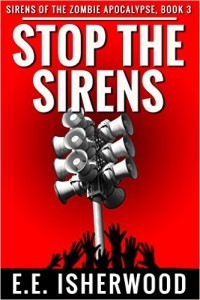 Stop the Sirens by E.E. Isherwood
Stop the Sirens by E.E. Isherwood
When the sirens end, “post-apocalypse” begins.
Exhausted after two weeks of rolling chaos since the sirens, Liam and his family prepare for their biggest challenge yet.
Fifteen-year-old Liam Peters starts his day in a muddy creek. The Air Force tried to wipe his subdivision off the map, but luck and fast feet helped him find refuge from the big bombs. When he looks up, he sees his whole life has been swept away by fire. And Grandma? He’d been successful getting her out of the city, and across suburbia, but she was snatched from him minutes prior to the attack. She’d gotten a one-way ticket to a brutal government facility set up to research the cure.
As a studious reader of zombie literature, Liam knows the dangers of being without shelter or direction during the zombie plague. He’d already been attacked by angry looters, malicious refugees, and hordes of zombies. His house had been riddled by a chain gun–twice–before the final bombs fell. He tried to look ahead, but saw little hope. He was bolstered by Victoria, but without Grandma by his side he felt defeated.
And yet, hope was out there. People were coming together to survive and help each other. One such group was at the Beaumont Boy Scout Reservation. It was an enclave of peace within the swirl of zombies and death engulfing all of metropolitan St. Louis. There Liam and his family might find a base from which to search for Grandma Marty.
As book 3 concludes, Liam will learn the origin of the plague, the fate of Grandma, and whether a couple of teenagers have anything to look forward to in a world filled with zombies
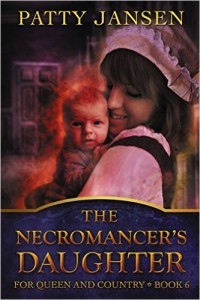 The Necromancer’s Daughter by Patty Jansen
The Necromancer’s Daughter by Patty Jansen
One brave woman’s struggle against magical forces.
Queen Johanna’s position in Saardam is fragile. The Barons and Kings of the countries in the hinterland are not happy that she helped the royal family to survive and is now about to ensure the next generation. They vow to teach this little upstart country a lesson for once and for all.
Of course it is not so much about petty rivalry, but about access to the sea port that connects the hinterland with the lucrative ocean trade.
Johanna knows that if it came to a fight Saardam could never survive, so she has invited all the heads of state and other important people for talks to invest in the city’s shattered infrastructure for the benefit of all.
As a congregation of royal families gathers such as the lowlands have never seen, the magicians travelling with the esteemed guests prepare the final and most insidious attempt to get control of the upstart little country and its usurper, commoner queen: through her baby daughter.
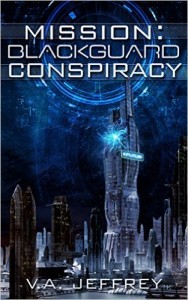 Mission: Blackguard Conspiracy by V.A. Jeffrey
Mission: Blackguard Conspiracy by V.A. Jeffrey
The Dark Energy Project, started by a group of far-thinking engineers, scientists and programmers many years ago has come roaring back like a storm!
Meant to catapult human exploration and civilization out to the farthest reaches of space, it centered around the groundbreaking information on how to build working stargates. Except, the information was stolen and its founders and all other humans attached to the project killed by alien loyalists. Thereafter, it was renamed The Blackguard Project, the linchpin of the entire drama between humans, alien rebels and the alien loyalists. It’s a shortcut for the aliens in the approaching Black Fleet who abandoned their dying planet and are heading to the solar system to invade Earth and wipe out humanity.
Bob receives a copy of the Blackguard files by The Boss with a new mission: stop the inaugural activation of the new stargate at the annual Sci-Tech Convention. To most people, this is a momentous year in the history of science and space exploration. However, Bob and his U-net band know that this gate is a Trojan Horse! It must be stopped and the aliens behind this sinister plan exposed, no matter the cost.
Kathy and her sister, Samantha, have always been a team. Throughout their time as witches, they’ve taken out more than their share of bad guys. But after Kathy meets Will, who she learns is a demonic Dark Knight, her loyalties begin to change.
Meanwhile, Samantha doesn’t trust Will or his intentions. Still, Kathy can’t help but feel tempted by the dark side as she falls deeper in love with Will. Crossing over would give Kathy the freedom to do whatever she wanted with her magic. No rules. No limitations. It would also mean breaking the bond she has always shared with her sister, who has made it clear that she wants nothing to do with the dark side.
When Will proposes they take over the underworld, Kathy loves the idea of having power. But it also leaves her with a choice that will change her life: abandon her family and the life she has always known, or give up the love of her life forever.
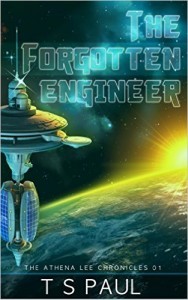 The Forgotten Engineer by T.S. Paul
The Forgotten Engineer by T.S. Paul
Ensign Athena Lee was on her first engineering assignment. She was helping to build a secret space station. There was a war on and this new station was vital. When the engineering fleet was attacked and destroyed she was left lost and alone. When life gives you lemons, make lemonade. She was going to have to Engineer her way home.
“After 55 years of waiting for an answer to the invite to join the RIM Confederacy, the planet Enki has responded with an alternate idea—that the RIM Confederacy join them instead. Captain Tanner Scott is sent on the Diplomatic mission to get the Enkians to reconsider.
What he and the Atlas crew do is to help the new Ambassador to find a way to both diplomatic as well as the Enki into the RIM Confederacy without exposing to them the secret of why that is so important. If the Enkians can be persuaded, the RIM could gain access to the newly discovered metal ores that appear to make a ship invulnerable.
But all of the RIM wants to shortcut the process so the Atlas needs to quarantine the planet as well as maintain full diplomacy with the Enkians. When the Caliphate gets involved and back room deals are made it all comes to a head at the Atlas Adept Officers trial for Terrorism.
Captain Scott will try to defend his officer by acting as his defense counsel—a job that is made even more difficult as the Enkian society and justice system are both hard to learn and hard to navigate within the law…”
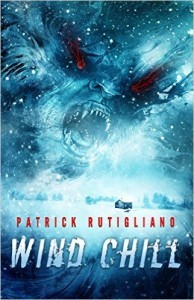 Wind Chill by Patrick Rutigliano
Wind Chill by Patrick Rutigliano
What if you were held captive by your own family?
Emma Rawlins has spent the last year a prisoner. The months following her mother’s death dragged her father into a paranoid spiral of conspiracy theories and doomsday premonitions. Obsessing him, controlling him, they now whisper the end days are finally at hand.
And he doesn’t intend to face them alone.
Emma finds herself drugged and dragged to a secluded cabin, the last refuge from a society supposedly due to collapse. Their cabin a snowbound fortress, her every move controlled, but even that isn’t enough to weather the end of the world.
Everything she knows is out of reach, lost beyond a haze of white. There is no choice but to play her father’s game while she plans her escape.
But there is a force far colder than the freezing drifts. Ancient, ravenous, it knows no mercy. And it’s already had a taste…
Wallace Avery, bookworm extraordinaire, is not out at work in either sense, as a gay man or as a fox shifter. He likes his privacy, and he’s quite content in records management, thank you: filing papers and spending his off hours quietly.
When the opportunity he never wanted is thrust into his lap, he has to decide what to do about it. Police work and a pay raise, and probably stress up to his eyeballs, or trying to stay in his old life and pretending he’s not capable of so much more?
Whatever he chooses, he definitely doesn’t want to fall for someone from his workplace. Especially not that cop . . .
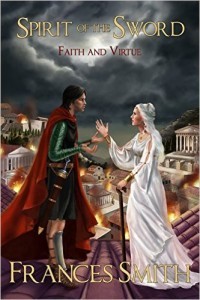 Spirit of the Sword: Faith and Virtue by Frances Smith
Spirit of the Sword: Faith and Virtue by Frances Smith
Michael has survived his battle with the Voice of Corona, and is determined to walk the path of service to the immortal Empress Aegea. But opposing him is none other than his own beloved brother, Felix, who was thought dead but is the chief servant to Michael’s enemy, Quirian.
Meanwhile, the quarrels between the Empire’s feuding factions continue as Miranda finds herself increasingly entangled in the treacherous currents of Imperial politics. As plots multiply, Miranda finds herself increasingly unsure of her loyalties to anyone but her lover Octavia and her dear friend, Empress Portia. But as the Empire hurtles towards civil war the day approaches when she will have to choose a side once and for all.
The roads of Michael, Felix and Miranda entwine in Eternal Pantheia, the Empire’s capital, where betrayals and revelations try their resolve. As the city burns around them the three divided siblings must reunite and put their faith in one another, for only together can they save the Empire, or let the fires of its hubris consume the nation.
 The Increasingly Transparent Girl by Matthew Stott
The Increasingly Transparent Girl by Matthew Stott
Things live between awake and asleep. In the moment after your eyes grow too heavy to stay open, but before the dreams take you.
One day, Melody May begins to disappear from view. Her hands, her knees, her face, her everything. A monster’s enchantment has ensnared her, and now Melody must travel across a strange and dangerous land between awake and asleep to reclaim herself; otherwise, in 48 short hours, she will never have existed at all…
 Send to Kindle
Send to Kindle
Cora Buhlert's Blog
- Cora Buhlert's profile
- 14 followers


